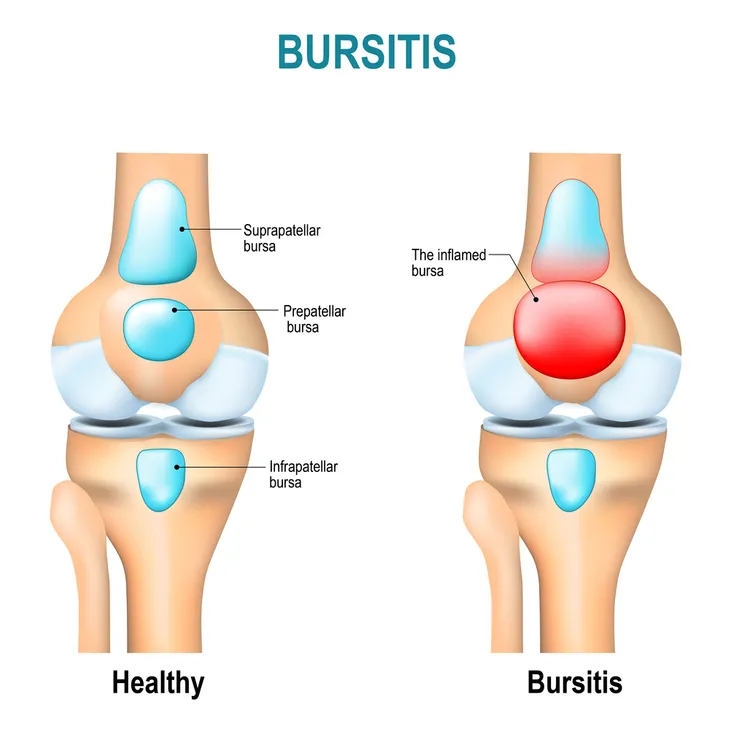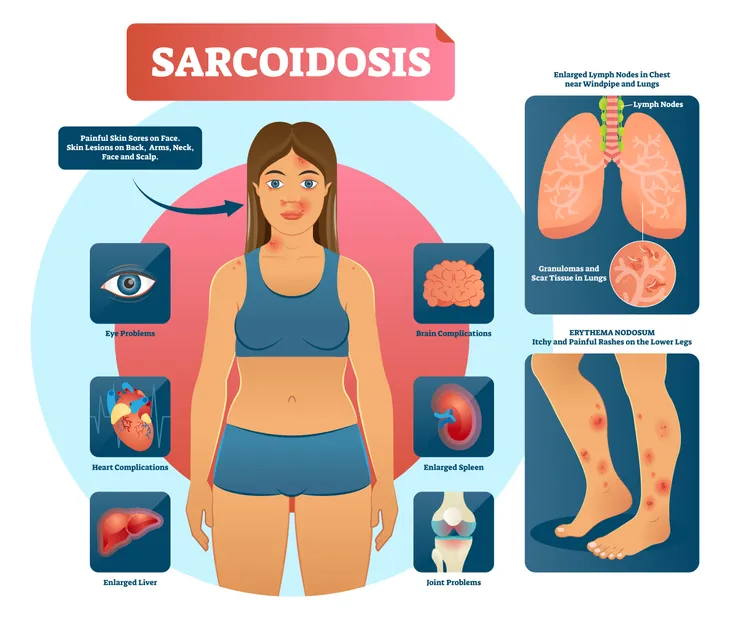Pain and swelling in your joints can make just about any activity miserable. Anything from opening jars to gardening in your yard can ruin your day. Oftentimes, we just assume that our pain is caused by arthritis but it turns out there are many other conditions that have the same symptoms that mimic arthritis.
In this article, we will cover the conditions commonly mistaken for arthritis and the distinguishing characteristics to help you determine which condition you may be suffering from. If you are concerned about your health, always be sure to talk to your doctor to get a firm diagnosis and a treatment plan developed for your situation.
Fibromyalgia
Fibromyalgia is a chronic condition that affects the whole body. It causes pain in the joints, predominantly while at rest. Sufferers can also have other symptoms like brain fog, depression, anxiety, headaches, and sleep problems. It can be a difficult condition to diagnose as there is no specific fibromyalgia test and the symptoms mimic so many other diseases.
What sets arthritis apart from fibromyalgia is that arthritis is localized to bone joints. Another key difference is that in arthritis the pain and discomfort get worse with use. Patients with fibromyalgia tend to feel worse with rest. Thankfully, there is testing to diagnose arthritis to help your doctor differentiate it from fibromyalgia.
Lupus
Lupus is an autoimmune disease where the body attacks itself causing damage to healthy tissue. The inflammation caused by the disease creates problems within multiple body systems like the heart, joints, kidneys, brain, and lungs says the Mayo Clinic. It’s sometimes called “The Great Imitator,” says the Arthritis Foundation due to how it mimics other conditions.
Rheumatoid arthritis is an autoimmune disease like lupus. However, “in arthritis, damage to synovial fluid and bone erosion causes pain,” says Very Well Health. In lupus, joint pain is caused by damage to the connective tissue in ligaments and tendons which can be seen during diagnostic testing reports the source. The other characteristics of lupus, like the facial rash and how it can flare then go away make it unique from arthritis.
Carpal Tunnel Syndrome
Wondering if you have arthritis or carpal tunnel syndrome? It can be tricky to differentiate the two but we can help you distinguish which condition is causing your symptoms. In carpal tunnel syndrome, a nerve in your wrist is being pinched by the aptly named carpal tunnel. The nerve pinching causes pain, weakness, and numbness that can run up your arm. You’re more likely to develop carpal tunnel syndrome if you perform repetitive motions like typing.
Carpal tunnel syndrome is only felt in the hands, wrist, and arms. Whereas arthritis can be felt in any joint. The disease process is also very different between the two conditions. If you are diagnosed with carpal tunnel syndrome your doctor will give you a few suggestions on how to manage the condition like wearing a wrist brace or taking ibuprofen.
Gout
Wondering if that pain in your toe or hip is from gout or arthritis? Here’s how you know. Gout is a disease that causes a buildup of uric acid within the joint. A gout attack is when the uric acid causes crystal deposits in the joint which results in inflammation and tissue damage. This causes a swollen and painful joint that lasts for approximately 3 to 10 days. “Over time, gout attacks can become more frequent, last longer, and may not resolve” reports Very Well Health.
The disease process behind arthritis is different. “Osteoarthritis causes cartilage — the hard, slippery tissue that covers the ends of bones where they form a joint — to break down. Rheumatoid arthritis is a disease in which the immune system attacks the joints, beginning with the lining of joints,” says the Mayo Clinic.
Hypothyroidism
Hypothyroidism is a condition when the thyroid, a small butterfly-shaped gland, doesn’t produce enough thyroid hormone. This can cause all sorts of changes within the body, including temperature changes, a slower metabolism, and heart rate. One symptom of hypothyroidism that overlaps with arthritis is joint pain. According to the Mayo Clinic, hypothyroidism can cause joint stiffness and pain.
For most people, it’s not the joint pain that prompts them to see their doctor. The other symptoms of hypothyroidism like fatigue, feeling cold, and hair loss tend to be more noticeable for people. But it’s important to know if you have been diagnosed with hypothyroidism that joint pain can go along with the diagnosis and may not be your standard arthritis pain.
Lyme Disease
Lyme disease is a tick-borne bacterial infection that can wreak havoc on your body if it isn’t quickly treated. “In the early phases of this health condition, you may feel all-over joint and muscle pain without noticeable signs of inflammation such as warmth, redness, and swelling,” says Natalie E. Azar, MD, assistant clinical professor of medicine and rheumatology at the NYU Langone Medical Center in New York from Everyday Health.
But as Lyme disease progresses you can develop monoarticular inflammatory arthritis. This type of arthritis has a characteristic trait of generally affecting only one joint in a lower extremity. Whereas, rheumatoid arthritis (RA) typically affects both sides of the body. Lyme disease is a serious illness that needs antibiotics, if you’ve been in an area known to have ticks and are feeling sick it’s time to call your doctor.
Bursitis
Bursae are small fluid-filled sacs near your joints that cushion the bones, tendons, and muscles. When these sacs become inflamed from overuse or an injury it is called bursitis. Bursitis is most commonly seen in the hips, shoulders, and elbow reports the Mayo Clinic. Symptoms include joint pain and swelling that mimics arthritis.
One of the ways to differentiate arthritis from bursitis is that “bursitis typically affects only one joint at a time—commonly the knee, elbow, or shoulder—and does not have systemic symptoms that can be common in RA (e.g., fever)” reports Very Well Health. The source also says that a bursitis diagnosis is “based on physical examination and imaging tests such as x-rays or MRIs. Your doctor may take fluid from the swollen area to rule out an infection as well.”
Sarcoidosis
Sarcoidosis is a rare inflammatory disease where small groups of inflammatory cells come together on various parts of the body. It generally affects the lungs, lymph nodes, and skin reports Very Well Health. The source also states that “sarcoidosis can manifest with synovitis in several joints and may be seropositive.”
What makes sarcoidosis different than arthritis is its other symptoms. The source reports that sarcoidosis can cause cough, shortness of breath, fatigue, night sweats, and weight loss. A sarcoidosis diagnosis is completed through a biopsy which will give patients a definitive name to their symptoms.
Vasculitis
There are so many different conditions that are mistaken for arthritis and it’s time to add vasculitis to the list. Vasculitis is when the blood vessels become inflamed. It’s an autoimmune response that can be confused with rheumatoid arthritis reports Very Well Health. There are “two types of vasculitis, polymyalgia rheumatica (PMR) and giant cell arteritis (GCA), which can occur with symmetrical polyarthritis. In addition, people with vasculitis often test seropositive for rheumatoid factor” says the source.
One of the main ways to distinguish vasculitis from arthritis is that vasculitis is often accompanied by headaches. It can be difficult for healthcare providers to diagnosis vasculitis and they will need to take a detailed health history. If you are being evaluated for vasculitis do your best to provide the most comprehensive information to your doctors.
Viral Infections
Who would have thought that a viral infection could be mistaken for arthritis? It’s true, viruses can settle in just about anywhere in your body and cause pain, including your joints. “Viral infections such as rubella, parvovirus B19, HIV, and hepatitis B and C can cause pain and swelling in multiple joints (polyarthritis) and present in a way that’s clinically similar to rheumatoid arthritis,” reports Very Well Health.
However, your doctor will be able to determine if the cause of your joint pain is from a virus or arthritis based on your health history and a physical exam. A viral infection will usually bring along other symptoms like a rash or fever. Since there is no specific treatment for most viruses your doctor will likely suggest supportive therapy until your symptoms subside.
Tendonitis
Tendonitis is an overuse injury that causes pain and inflammation. Tendons connect bone to muscle and are susceptible to injury from sports or work. When tendons become irritated they cause pain and swelling which can be mistaken for arthritis.
One of the key factors to help determine if your pain is from tendonitis or arthritis is that tendonitis is usually localized to only a specific joint. If you play tennis you might have pain within your elbow, often called tennis elbow. Or if you are a runner or play fast-moving sports pain at the back of your ankle can be Achilles tendonitis. Thankfully, mild tendonitis can be treated at home with rest, ice, and over-the-counter medications.














